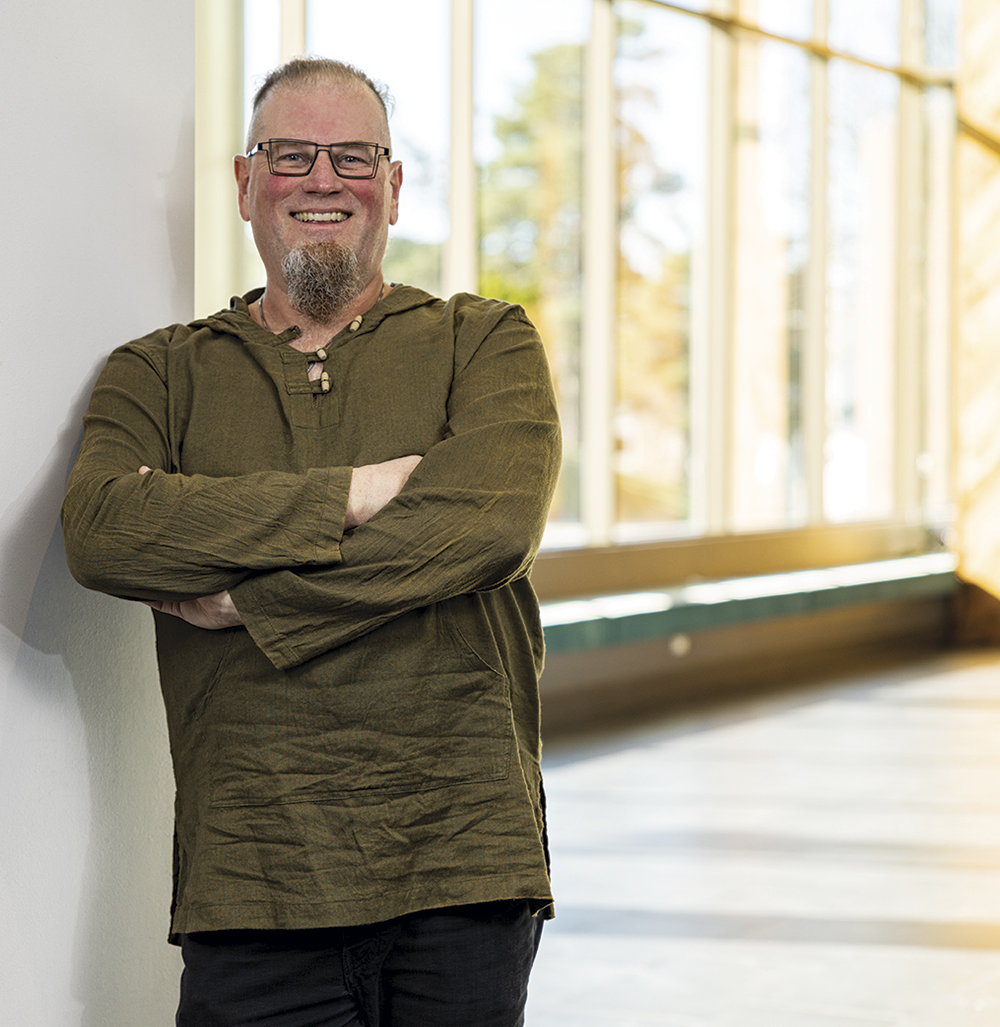
With one foot in the academic music world as a composer and professor at UMKC Conservatory where he won the 2008 Kauffman Award for Artistic Excellence, another in the intuitive one of healing, Paul Rudy explores a full spectrum of music. He is a practitioner of sound medicine through retreats at his Harmony Farm in Perry, Kansas, and elsewhere.
“Our world is not just acoustically noisy,” Rudy says. “It’s also metaphysically bombarding us internally and externally with chaotic signals of all kinds. That’s why spending time in nature and with sound healing can be so restorative. Sound, intentionally directed by a practitioner that is listening to your body, and responding to what it wants, can be so profound. It moves energy in so many ways: physically, emotionally, mentally, and spiritually.” What music, sound, and vibration have in common is oscillation. Sound healing gets everything oscillating again through balanced vibration. Says Rudy, “When energy starts flowing again, the body can do what it was designed to do: Heal!”
Says Rudy, “At Harmony Farm, when it is so quiet and dark, I’m reminded that when I have the presence to truly listen to others and all that I encounter, only then can I stand fully in my own power for a short oscillation through the Universe.”
And that’s just what we need for a new year.
How did you get interested in music, and then the possibilities of pure sound frequencies?
When I was in junior high, I got to play the trumpet solo on In the Mood, and started improvising. That lit a fire in my soul, and improvisation has become a way of life even to this day. In graduate school, I discovered the electronic music studio and sound sculpting, much like an artist works with a block of marble or wood. The sounds within sounds reveal themselves magically as layers are electronically peeled away or added on top.
In the mid-2000’s I was driving across Kansas with Alison Krause playing from a CD. I started noticing that the tips of my fingers were vibrating with the cymbal strikes. That was probably the first time I physically felt music and sound expand to vibration.
How does the human body experience sound?
It is common to experience music emotionally. Yet, there are so many more layers we can experience through listening more deeply and with intention.
The short version is that the fifth chakra in our body’s energy system is called the “throat chakra,” which would be better named the “sound” chakra. This is the basis of my personal practice and working with clients. Sound healing can harmonize our chakras, and when the fifth chakra is tuned, we can more freely speak our truth and listen to what is happening around us.
When we are tuned and in harmony with ourselves, we begin to put our own vibration, resonance, and balanced oscillation out into the world, rather than being subject to the vibration of others!
How can “hearing” sound through the human body help heal it?
The body is actually “hearing” sound all the time. With our ears it happens through movement of air molecules. With our bodies, it travels through all our layers from tissues to bone. Our bodies are 70 to 80 percent water, and sound travels eight times faster and more efficiently in water, so our body water becomes the fluid medium that connects it all together and transduces the sound vibration. So, the transfer of energy from sound travelling intentionally into the body has the power to transmute areas that are stuck and get energy flowing again.
How has the Kansas City area nurtured your creativity?
I have been blessed with amazing colleagues at the UMKC Conservatory for over 20 years. I also get to work with young people, and love the fresh ideas they have just by being themselves. In addition to all the traditional music happenings in KC, I’ve also had a lot of unique opportunities as well, from commissions and sound mediations at the Nelson-Atkins Museum of Art, to working with an architecture firm to tune a set of wind chimes for a sculpture. I’ve learned to get out of my head more and more, and into experiences with people and places through sound. A current research collaboration with Surgilab at the UMKC Medical School is taking me way beyond my musical origins and into the operating room to study and record the sound landscape in order to make it safer.


